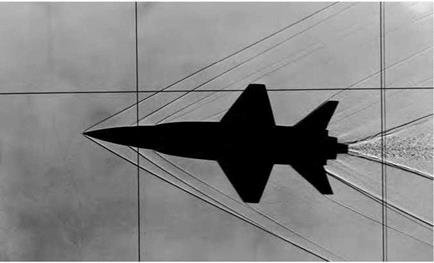High-Speed Investigations
High-speed studies of dynamic stability were very active at Wallops. The scope and contributions of the Wallops rocket-boosted model research programs for aircraft configurations, missiles, and airframe components covered an astounding number of technical areas, including aerodynamic performance, flutter, stability and control, heat transfer, automatic controls, boundary-layer control, inlet performance, ramjets, and separation behavior of aircraft components and stores. As an example of test productivity, in just 3 years beginning in 1947, over 386 models were launched at Wallops to evaluate a single topic: roll control effectiveness at transonic conditions. These tests included generic configurations and models with wings representative of the historic Douglas D-558-2 Skyrocket, Douglas X-3 Stiletto, and Bell X-2 research aircraft.[471] Fundamental studies of dynamic stability and control were also conducted with generic research models to study basic phenomena such as longitudinal trim changes, dynamic longitudinal stability, control-hinge moments, and aerodynamic damping in roll.[472] Studies with models of the D-558-2 also detected unexpected coupling of longitudinal and lateral oscillations, a problem that would subsequently prove to be common for configurations with long fuselages and relatively small wings.[473] Similar coupled motions caused great concern in the X-3 and F-100 aircraft development programs and spurred on numerous studies of the phenomenon known as inertial coupling.
More than 20 specific aircraft configurations were evaluated during the Wallops studies, including early models of such well-known aircraft as the Douglas F4D Skyray, the McDonnell F3H Demon, the Convair B-58 Hustler, the North American F-100 Super Sabre, the Chance Vought F8U Crusader, the Convair F-102 Delta Dagger, the Grumman F11F Tiger, and the McDonnell F-4 Phantom II.
|
Shadowgraph of X-15 model in free flight during high-speed tests in the Ames SFFT facility. Shock wave patterns emanating from various airframe components are visible. NASA. |
High-speed dynamic stability testing techniques at the Ames SFFT included studies of the static and dynamic stability of blunt-nose reentry shapes, including analyses of boundary-layer separation.[474] This work included studies of the supersonic dynamic stability characteristics of the Mercury capsule. Noting the experimental observation of nonlinear variations of pitching moment with angle of attack typically exhibited by blunt bodies, Ames researchers contributed a mathematical method for including such nonlinearities in theoretical analyses and predictions of capsule dynamic stability at supersonic speeds. During the X-15 program, Ames conducted free-flight testing in the SFFT to define stability, control, and flow-field characteristics of the configuration at high supersonic speeds.[475]











